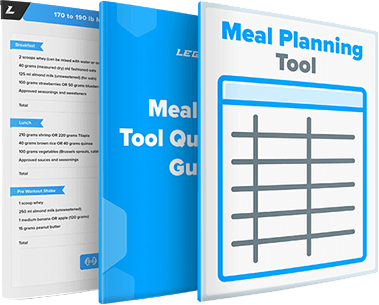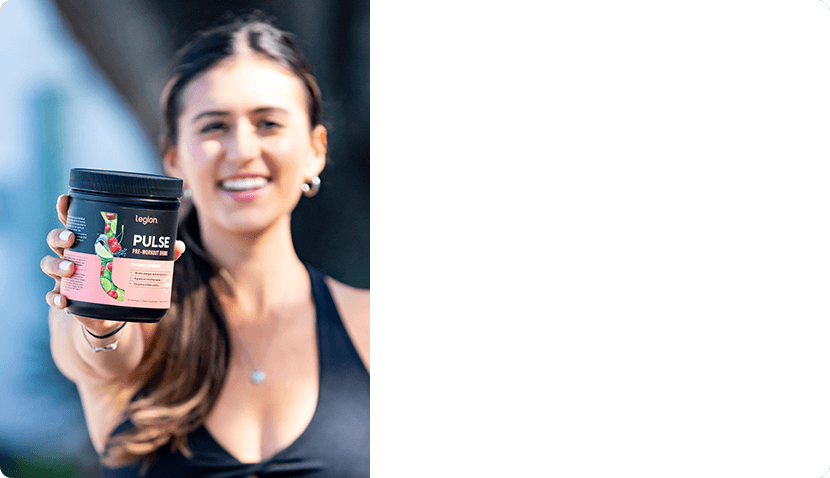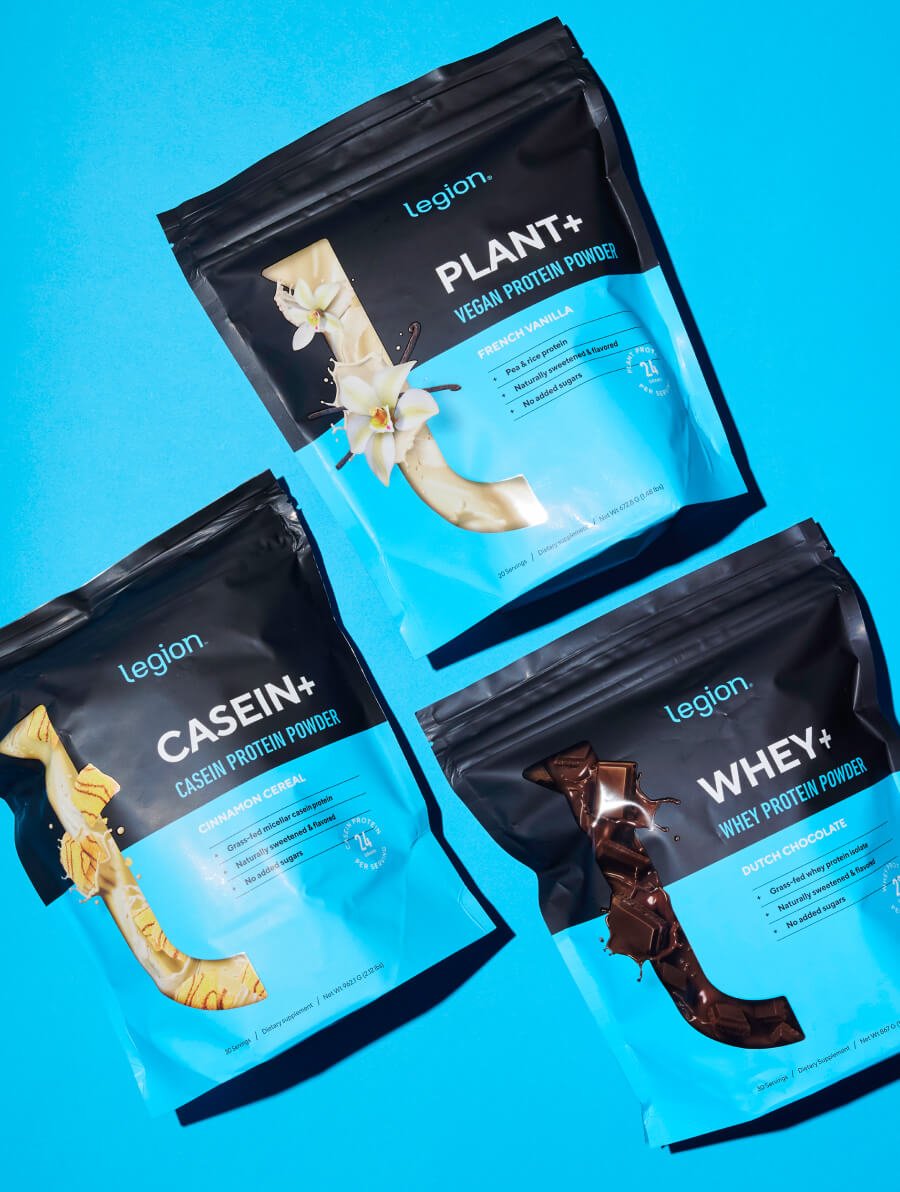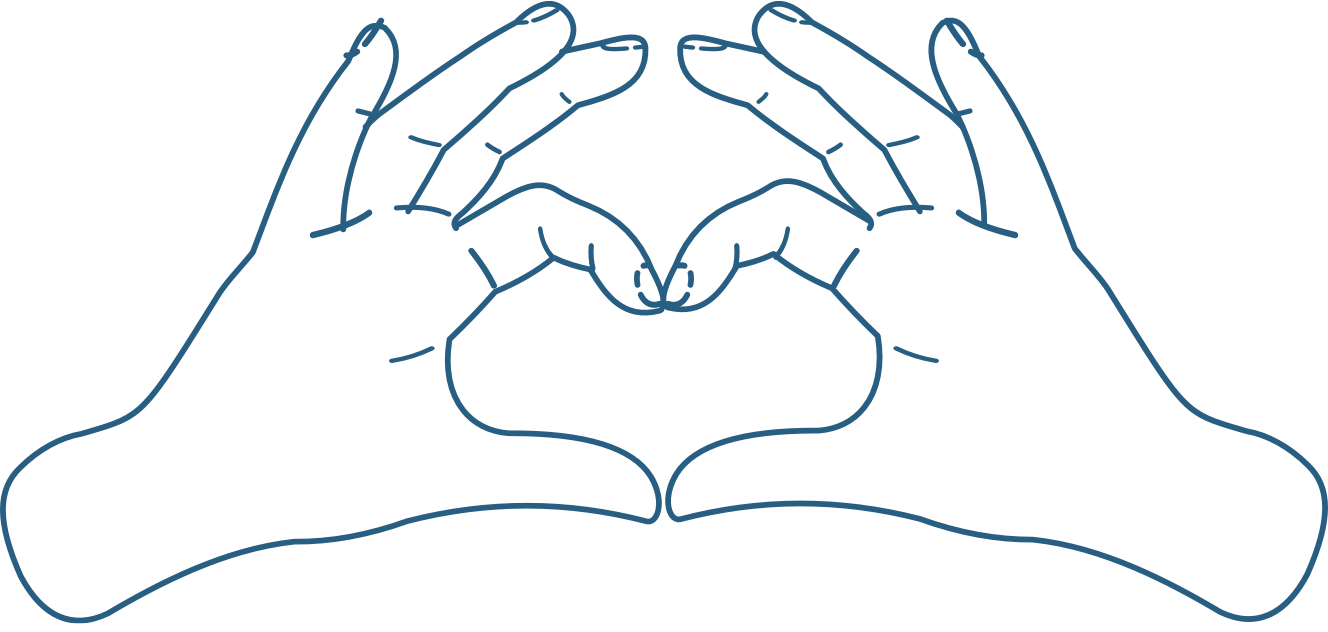Listen on Apple Podcasts | Listen on Spotify | Listen on YouTube
This episode is one of the chapters of the new second edition of my bestselling book for experienced weightlifters, Beyond Bigger Leaner Stronger, which is live now at www.bblsbook.com.
In this book, you’ll learn science-based and time-proven formulas for eating and training that’ll help you shatter muscle and strength plateaus, set new personal records, and build your best body ever.
And better yet, you’ll do it without following restrictive or exotic diets, putting in long hours at the gym, or doing crushing workouts that leave you aching from tip to tail.
Also, to celebrate this momentous occasion, I’m giving away over $6,000 of glorious goodies, including . . .
- 30-minute Zoom call with yours unruly
- Vitamix blender
- WHOOP fitness tracker
- $200 Lululemon gift card
- One month of Legion VIP coaching
- Inzer weightlifting belt
- And much more . . .
All you have to do for a chance to win is…
- Head over to bblsbook.com, and buy a copy of BBLS 2.0 (any format)
- Forward the receipt email to [email protected]
. . . and voila, you’re entered in the giveaway.
You have to act fast, though, because the launch bonanza ends and the winners will be chosen on October 16th.
You can also increase your chances of winning by buying extra copies of the book (any formats). Specifically . . .
- If you buy 3 copies, you’ll get 5 giveaway entries (+400% chance to win).
- If you buy 5 copies, you’ll get 8 giveaway entries (+700% chance to win).
- If you buy 10 copies, you’ll get 15 giveaway entries (+1400% chance to win) plus an autographed copy of the book.
So, for instance, if you buy the paperback, ebook, and audiobook, you’ll get 5 entries to win, and if you buy 3 paperbacks as well as the ebook and audiobook, you’ll get 8 entries, and so forth.
And what are you going to do with extra books, you’re wondering?
You could give them to your workout buddies, donate them to your local library, hurl them at unpleasant children, I don’t know—there are so many options when you think about it.
Anyway, to learn more about the giveaway and get your copy of Beyond Bigger Leaner Stronger 2.0, head over to www.bblsbook.com.
Alright, let’s get to the episode.
Timestamps:
4:02 – The 3 movements: push, pull, squat
4:47 – Relative strength
6:12 – How much do increase or decreases in body weight impact strength?
8:13 – How strong can you get naturally?
10:03 – Bone length
15:37 – Muscle structure
16:52 – Muscle size
20:14 – What science says about relative strength
Mentioned on the show:
Beyond Bigger Leaner Stronger 2.0
What did you think of this episode? Have anything else to share? Let me know in the comments below!
Transcript:
Hey, Mike Matthews here and welcome to another episode of Muscle For Life. Thank you for joining me today, and what do I have in store for you? This episode is one of the chapters of the new second edition of my best selling book for Experienced Weightlifters Beyond Bigger, Leaner, Stronger, which is.
Right now [email protected]. Now in this book, you will learn science based and time prudent formulas for eating and training that will help you shatter muscle and strength plateaus. Set new personal records and build your best body. Ever and better yet, you will do those things without falling, restrictive or exotic diets without putting long hours in at the gym and without having to do crushing workouts that leave you aching from tip to tail.
Also to celebrate this momentous occasion, I’m giving away over $6,000 of glorious goodies, including a 30 minute zoom call with yours. Unruly. That’s priceless. Of course, A Vitamix blender, a whoop fitness tracker, a $200 Lululemon gift card, one month of Legion v i p coaching. More. Now all you have to do for a chance to win all those cool things is head over to www.blsbook.com and buy a copy of BLS 2.0, any format, ebook, paperback, audiobook, whichever one you want, and then forward the receipt.
Email to [email protected], E G I N supplements.com. And voila, you are entered in the give. You have to act fast though because the book Launch Bonanza ends and the winners will be chosen on October 16th. Now, you can also increase your chances of winning by buying extra copies of the book.
Again, any formats, and specifically, if you buy three copies of the book instead of one, you will get five giveaway entries. So that is a plus 400% chance to win. If you buy five copies, you’ll. Eight giveaway entries. That is a plus 700% chance to win. And if you buy 10 copies, you are going to get 15 giveaway entries, which is a plus 1400% chance to win.
And if you buy 10 copies, you are going to get an autographed copy of the book as well, that you don’t have to win, you’re just gonna get it. So for instance, if you buy the paper back, Ebook and audiobook. That’s three copies. You’ll get five entries to win, and then if you buy three paperbacks as well as the ebook and audiobook, that is five copies and you’ll get eight entries and so forth.
And what are you gonna do with extra books? You’re wondering you could give them to your workout buddies, you could donate them to your local library. You could hurl them at unpleasant children. I don’t know. Many options when you think about it. Anyway, to learn more about the giveaway and to get your copy or copies of Beyond Bigger, Leaner, Stronger 2.0, head over to www.blsbook.com, chapter 12.
How much strength can you really gain naturally? Real self respect comes from dominion over self from true independence. Stephen r Covey. For many weightlifters, the bench press is the ultimate benchmark of strength. If you have a big bench, you’re strong, and if you don’t, you’re not. This is short sighted.
The bench press is a good measure of pushing strength, but what about the back and legs, which contain some of the largest muscles in the. Would you say that someone with a strong bench press, but weak deadlift and squat is truly strong? Thus, if you want to gauge your strength, you want to evaluate your whole body strength, and an effective way to do that is by appraising your performance on the following movements Push.
Pull squat. There are many pushing, pulling, and squatting exercises you could use to test your strength. But leading experts and strength coaches have settled on three one barbell squat. Two barbell bench press. Three barbell deadlift. The barbell squat proves your lower body and back strength. The bench press your chest, shoulder, and arm strength and the deadlift, your back hamstring, and glute strength.
Thus, if you add your squat, bench, press and deadlift. One rep maxes. You’ll have an accurate and practical estimate of your whole body strength. That said, while the sum of these lifts referred to as your total gives you a quantitative view of your strength in terms of absolute numbers, it doesn’t give you a qualitative one in terms of how those lifts relate to your size and stature.
In other words, if all you’re looking at is the weight on the bar, a squat of 600 pounds is far stronger than 400 pounds. But what if the guy squatting 600 pounds is six two and weighs 300 pounds while the other is five eight and weighs 200 pounds? Which lift should we consider more impressive? This is where relative strength enters the picture, which also accounts for body weight and therefore allows us to compare the strength of people of different size.
In this way, someone who’s five foot five and 130 pounds can see how their numbers stack up against someone who’s seven foot two and 400 pounds, and determine who’s getting the most out of what they’ve got. You can’t just divide totals by body weights, though because of quirks of physics and biology, the mass weight of the human body increases faster than its.
For example, if I magically doubled my body weight, I wouldn’t be twice as strong. And likewise, if I shrunk to half my current size, I wouldn’t be half as strong. So how much do increases or decreases in body weight impact strength? To find the answer, we can use a technique known as tric scaling, which is a method that helps scientists understand how different characteristics change in an organism as size changes.
For instance, thanks to this line of research, we know that for most animal species, as the body size increases, the metabolic rate per unit of mass decrease. Good news for elephants who still need to eat 200 to 600 pounds of food every day. Power lifter, researcher and writer, Greg Knuckles gets all the credit here as he’s the one who figured out how to make tric scaling work for predicting strength in humans.
With a formula he created, you can calculate a number that represents your relative strength and then compare it to the figures of others to see where you. The only problem is it looks like double Dutch to most of us. So instead of waiting through the math, you can find a calculator that’ll do the heavy lifting for you at www.blsbook.com/strength.
There are other formulas out there for calculating relative strength, such as the Wils, Gloss Brer and Schwartz Malone Coefficient. But they’re less accurate than Knuckle’s Method, For example, it’s well known the Wilkes coefficient Misestimate the relative strength of people who weigh between 150 and 200 pounds.
The Schwartz Malone coefficient often overestimates the relative strength of people who weigh less than 150 pounds. The Gloss Sprinter coefficient, more or less just averages the results from the Wils and Schwartz Malone coefficients. But this doesn’t overcome their flaws as Knuckles explains in his extensive article on the topic, Tric scaling may not be perfect.
But it’s a better scientifically validated system for computing relative strength than the other popular methods. How strong can you get? Naturally, your ability to gain strength depends on a few factors with the chief ones being your skill and attitude. Bone length, muscle structure, muscle size. Let’s take a closer look at each skill and.
Strength is a skill. Lifting large amounts of weight with proper technique requires outstanding balance, coordination, and timing, and that’s why your first squat, bench press, and deadlift sessions felt awkward, uncoordinated, and weak. Accordingly, your strength is limited by not only your musculature, but also your movement patterns, which are flawed and inefficient in the beginning.
After a month or two of regular practice, though, your technique can rapidly improve along with your strength. In fact, research shows that most of the strength people gain in their first month of lifting weights is the result of improvements in coordination and technique, not muscle growth. These technique gains taper off quickly though, and after a year of regular lifting, your ability to perform key exercises is about as good as it’ll ever.
You can still improve your skill as time goes on, but the process will be slow and subtle. Your attitude in the gym matters too because approaching your genetic limit for strength requires a bit of piss and vinegar. To get there, you’ll need to do a lot of heavy weight lifting, which means getting comfortable, being uncomfortable, pushing yourself to add weight to the bar, and staying focused through weeks, months, and years of strenuous training.
In short, showing up and going through the motions isn’t enough. You have to strive to make every rep set and workout count bone length. Every exercise involves moving a weight a certain way for a certain distance. For example, a squat follows a simple sequence, one standing position with the leg. Two sitting position with your thighs more or less, parallel with the floor three standing position with the legs straight.
While small differences in individual anatomy don’t change this basic pattern, they can alter how easy or difficult the exercise is by changing how far the weight needs to move to perform each rep. For example, if your femurs are longer than average, You’ll find the squat and deadlift more difficult because the bar will have to travel a few inches farther every rep for the same reason.
If your arms are longer than average, you’ll find the bench and military press more difficult, but the deadlift will be easier because the bar won’t have to move as far to lock. Being six foot two with long legs and arms, I’ve experienced this first hand. The squat bench press and military press have always been the hardest to progress on, and my current personal bests are respectable, but nothing to write home about.
A 365 pound squat for two or three reps, 295 pound bench. Two reps and 225 pound seated military press for two or three reps. Deadlifting, however, has been somewhere in the middle for me as my long legs make it harder, but long arms make it easier. My personal best is still just middling 435 pounds for two reps, but was easier to achieve than the other lift.
I can’t blame my anatomy too much though because structural differences don’t have as big of an impact on strength gain. As many people claim first, every inch of height only increases the distance. The bar needs to move by a small amount and second. Even having to move the bar an inch or two more doesn’t always significantly increase the difficulty of the exercise.
To understand why, you must understand that every exercise has a sticking point. This is a point in the movement where the exercise becomes more difficult, and it typically makes up about three to six inches of the total distance the weight needs to travel. It would be more accurate to describe this as a sticking range since it’s a few inches, but I’ll stick with the more common term for the sake of familiarity.
Despite comprising a fraction of the total exercise movement, the sticking point more or less, dictates how difficult a rep will be if you can move through this spot quickly. You’ll probably complete the rep without a hitch, and if you can’t, you’ll probably grind to a halt. For instance, most people’s sticking point on the bench press is when the bar is three to six inches off their chest and continues for another three to six inches.
Once you get the bar through this span of the ascent, the rest feels easy. How does this relate to bone length and. I’ll use myself as an example. Again, compared to my five foot 10 lifting partner, I have to move the bar about two to three inches farther to complete each rep of the bench press. Only an inch or two are added to my sticking point, though while the rest of the additional distance isn’t as difficult.
And yes, that means my reps are harder than his and produce more fatigue as I get deeper into sets, but this isn’t likely to put me more than a rep or two behind him on most sets. Something else to consider is the fact that taller people can often gain more total muscle than shorter people, which can help mitigate anatomical disadvantage.
Additionally, having long bones may be a disadvantage in one exercise, but an advantage in another. As I just mentioned, my long arms make bench pressing harder, but they also make deadlifting easier. My long femurs on the other hand, make deadlifting and squatting harder and don’t help my bench press. So all things considered if someone can lift more weight than you, chances are that variations in height and proportions aren’t the driving factors.
Instead, It likely has more to do with the other reasons we’ll discuss in this chapter, particularly muscle size.
If you are liking this episode, you should know that it is one of the chapters of the new. Second edition of my best selling book for experienced weightlifters Beyond Bigger Leaders, Stronger, which is live right [email protected]. Also, you should know that to celebrate this momentous occasion, I am giving away over $6,000 of glorious goodies, including a 30 minute zoom call with yours unruly, A Vitamix blender, a whoop fitness tracker, a 200.
Lululemon gift card, one month of Legion v i p coaching, an insur weightlifting belt, and much more. And all you have to do for a chance to win is head over to bls book.com. Buy a copy of the book any format, and forward the receipt email to [email protected]. And voila, you are entered in the giveaway.
You have to act fast though because the book launch Bonanza ends and the winners will be chosen on October six. Muscle structure, while we all have the same muscles in our bodies and they’re all in the same general regions, there are differences in how they’re attached to our skeletons. These discrepancies are usually small, only a centimeter or two, but they can translate into huge differences in natural strength.
We don’t need to get too technical for this discussion, but what it boils down to is mechanical advantage. Because muscles function as levers where they attach to our bones impacts how much force they can produce and thus how much weight they can move. This is why studies have found that thanks to this type of anatomical variance strength can vary by as much as 25% among people with identical amounts of muscle mass.
If you’re worried that you’re in the disadvantaged camp, take heart because this should only concern you if you’re trying to become a competitive strength athlete. However, if you’re here to build a strong, muscular, lean, healthy body, you can achieve your goals with or without a genetic leg up. , but do keep anatomy in mind when comparing yourself to other people of similar size.
Some bodies are just built better for strength than others. Muscle size. Generally, the biggest guys in the gym are also the strongest. Sure there are exceptions, but more often than not, the people moving big loads are pretty jacked. This is clear to anyone who has spent enough time with the iron, but it’s also backed by scientific research.
For instance, studies conducted by scientists at Indiana University and the University of San Martin found that muscle mass is strongly associated with strength among power lifters. This doesn’t mean that every pound you add to the barbell makes you a little more muscular though because strength and muscle gains aren’t perfectly correl.
In other words, you can get stronger without getting bigger and vice versa. For example, most of the strength you gain during the first few weeks of lifting comes from getting better at exercises. Those technique gains I mentioned earlier. Your muscles contract harder and at the right times, your balance improves and your technique becomes respectable.
You still gain some muscle during this beginning period, but that only accounts for about 2% of the rather large jump in strength. After you’ve worked out the bugs in your form, however, which happens in the first few months for most people, further increases in strength, become largely dependent on gaining muscle.
And after a couple of years of consistent training, research shows about 65% of your strength gain will come from muscle. So once your newbie gains are behind you, if you want to keep getting stronger, you’ll have to keep getting bigger. And once you reach your genetic potential for muscle growth, you won’t have much more strength available to you either.
The best way to think of the relationship between muscle and strength is this. The amount of muscle you have represents your potential for. For instance, let’s say you use lighter weights and higher reps during a lean bulk and gain five pounds of muscle since you weren’t using heavy loads and lower reps and are a bit rusty at that type of training.
When you attempt to set new one rep maxes, you fall short of your previous bests. This might leave you confused or even crestfallen. But here’s the good news. If you were to train with heavy weights and low reps for four to six weeks, you’d likely beat your previous lifts. Why? Because those five additional pounds of muscle will allow you to generate more force than before.
You just have to reap your muscles to heavier loads and fewer reps. So how strong can you get naturally? I hate answering important questions like this with, It depends, but that’s the truth here. It’s hard to determine how strong you’ll be able to get because there are too many factors in play. Unlike the potential for muscularity, there isn’t one individual variable that we can isolate and use as a guidepost for potential strength.
That said, there is a way to estimate how strong you can get. It sounds simplistic, but it’s also commonsensical. Look at the performance of many other weightlifters similar to you in size. Chances are you’ll fall somewhere in the middle. While there are no comprehensive studies on strength potential, Greg Knuckles has conducted an unofficial study of the matter that lends some insight.
Knuckles collected survey responses from 1800 experienced weightlifters of all sizes, used the tric scaling method you learned about earlier to assess their relative strength levels. Then assigned their squat, bench, press, and deadlift one rep maxes and total into six categories. One beginner, two novice, three intermediate, four advanced, five elite.
Six World class. He also created a calculator that allows you to discover what category you are currently in, which you can find at www.blsbook.com/strength. For instance, when I plug in my height and weight, it says beginner level lifts for my size are 319 pounds on the squat, 213 pounds on the bench, and 359 pounds on the dead.
My all time best one rep maxes are 375 pounds on the squat, 300 pounds on the bench, and 445 pounds on the deadlift, which puts me in the novice category, and that’s not too shabby considering I’ve never trained to maximize my strength. If I focused on nothing but strength training for a while, the best I and most others, including you probably could hope for, regardless of how hard I tried, would be somewhere between intermediate and advanced, the middle of the curve.
With enough drugs, maybe I could reach the advanced tier, but no matter how much vitamin S I took, I’d never be able to put up elite or world class numbers. It’s not in my bones, literally, and I’m cool with that. This data is based on a bunch of hardcore power lifters. So as a natural recreational bodybuilder, high level novice strength is decent and intermediate would be impressive.
Now, if this calculator’s numbers seem unrealistically high to you, remember it’s using the averages of people who have been training for years and have likely achieved much or all of their genetic potential for muscle and. Moreover, this data was collected anonymously through the internet, so it’s very possible, all but guaranteed that some people were on steroids or lied about their numbers.
Still, despite the obvious limitations, Knuckles is, calculator is one of the few of its kind that takes your personal anatomy into account, making it plenty. You now know how to estimate how strong you can get naturally. And no matter your numbers, remember that you don’t need to get extremely strong to have a great physique.
You just have to get much stronger than when you started. And anyone can do that even better. By the end of this book, you’ll have everything you need to realize the bulk of your genetic potential for muscle and. It’ll take time, but if you keep putting in the work, you will get there. To that end, in the next chapter, you’ll learn the single most important advanced training technique there is the one that’ll dictate your progress more than any other.
It’s probably not what you think either because it’s simple, unsexy and unforgiving, which is why it’s also unpopular. Embrace it however, and you’ll be well on your way to more muscle and strength than ever before. Key takeaway. An effective way to evaluate your whole body strength is appraising your performance of the following movements, push, pull, squat, relative strength also accounts for body weight and therefore allows us to compare the strength of people of different sizes.
Go to www.blsbook.com/strength to find a calculator for determining how much strength you can gain naturally. Your ability to gain strength depends on a few factors with the chief ones being your skill and attitude. Bone length, muscle structure, and muscle size. Every exercise has a sticking point, which is a point in the movement where the exercise becomes more difficult, and it typically makes up about three to six inches of the total distance.
The weight needs to travel taller. People can often gain more total muscle than shorter people, which can help mitigate anatomical disadvantages. And having long bones may be a disadvantage in one exercise, but an advantage in another because muscles function as levers where they attach to our bones impacts how much force they can produce, and thus how much weight they can move.
Studies have found that thanks to this type of anatomical variance strength can vary by as much as 25% among people with identical amounts of muscle mass strength and muscle gains. Perfectly correlated. You can get stronger without getting bigger and vice versa. After a couple of years of consistent training, research shows that about 65% of your strength gain will come from muscle gain.
Once your newbie gains are behind you, if you want to keep getting stronger, you’ll have to keep getting bigger. Once you reach your genetic potential for muscle growth, you won’t have much more strength available to you either. The amount of muscle you have represents your potential for strength. Go to www.blsbook.com/strength to find a calculator for determining how your strength compares to weightlifters of a similar size.
That’s it for this episode. I hope you found it helpful, and in case you didn’t listen to the intro, I understand. It’s okay, . This was one of the bonus chapters of the new second edition of my best selling book for Experienced Weightlifters Beyond Bigger, Leaner, Stronger, which is now live over at www dot bls book dot.
Scientific References +
- A L Goldberg, J D Etlinger, D F Goldspink, C. J. (n.d.). Mechanism of Work-Induced Hypertrophy of Skeletal Muscle - PubMed. Retrieved July 8, 2020, from https://pubmed.ncbi.nlm.nih.gov/128681/
- Jorge E Chavarro 1, Janet W Rich-Edwards, Bernard A Rosner, W. C. W. (n.d.). Dietary Fatty Acid Intakes and the Risk of Ovulatory Infertility - PubMed. Retrieved July 8, 2020, from https://pubmed.ncbi.nlm.nih.gov/17209201/
- J Salmerón 1, F B Hu, J E Manson, M J Stampfer, G A Colditz, E B Rimm, W. C. W. (n.d.). Dietary Fat Intake and Risk of Type 2 Diabetes in Women - PubMed. Retrieved July 8, 2020, from https://pubmed.ncbi.nlm.nih.gov/11382654/
- Santarelli, R. L., Pierre, F., & Corpet, D. E. (2008). Processed meat and colorectal cancer: A review of epidemiologic and experimental evidence. In Nutrition and Cancer (Vol. 60, Issue 2, pp. 131–144). Nutr Cancer. https://doi.org/10.1080/01635580701684872
- Mulholland, H. G., Murray, L. J., Cardwell, C. R., & Cantwell, M. M. (2009). Glycemic index, glycemic load, and risk of digestive tract neoplasms: a systematic review and meta-analysis. The American Journal of Clinical Nutrition, 89(2), 568–576. https://doi.org/10.3945/ajcn.2008.26823
- Gibson, S. A. (2007). Dietary sugars intake and micronutrient adequacy: A systematic review of the evidence. In Nutrition Research Reviews (Vol. 20, Issue 2, pp. 121–131). Nutr Res Rev. https://doi.org/10.1017/S0954422407797846
- Howarth, K. R., Phillips, S. M., MacDonald, M. J., Richards, D., Moreau, N. A., & Gibala, M. J. (2010). Effect of glycogen availability on human skeletal muscle protein turnover during exercise and recovery. Journal of Applied Physiology, 109(2), 431–438. https://doi.org/10.1152/japplphysiol.00108.2009
- Denne, S. C., Liechty, E. A., Liu, Y. M., Brechtel, G., & Baron, A. D. (1991). Proteolysis in skeletal muscle and whole body in response to euglycemic hyperinsulinemia in normal adults. American Journal of Physiology - Endocrinology and Metabolism, 261(6 24-6). https://doi.org/10.1152/ajpendo.1991.261.6.e809
- Creer, A., Gallagher, P., Slivka, D., Jemiolo, B., Fink, W., & Trappe, S. (2005). Influence of muscle glycogen availability on ERK1/2 and Akt signaling after resistance exercise in human skeletal muscle. Journal of Applied Physiology, 99(3), 950–956. https://doi.org/10.1152/japplphysiol.00110.2005
- Burke, L. M., Kiens, B., & Ivy, J. L. (2004). Carbohydrates and fat for training and recovery. Journal of Sports Sciences, 22(1), 15–30. https://doi.org/10.1080/0264041031000140527
- Carol S Johnston 1, Sherrie L Tjonn, Pamela D Swan, Andrea White, Heather Hutchins, B. S. (n.d.). Ketogenic Low-Carbohydrate Diets Have No Metabolic Advantage Over Nonketogenic Low-Carbohydrate Diets - PubMed. Retrieved July 8, 2020, from https://pubmed.ncbi.nlm.nih.gov/16685046/
- Helms, E. R., Aragon, A. A., & Fitschen, P. J. (2014). Evidence-based recommendations for natural bodybuilding contest preparation: Nutrition and supplementation. In Journal of the International Society of Sports Nutrition (Vol. 11, Issue 1, pp. 1–20). BioMed Central Ltd. https://doi.org/10.1186/1550-2783-11-20
- Tipton, K. D., & Ferrando, A. A. (2008). Improving muscle mass: Response of muscle metabolism to exercise, nutrition and anabolic agents. Essays in Biochemistry, 44, 85–98. https://doi.org/10.1042/BSE0440085
- Wang, X., Hu, Z., Hu, J., Du, J., & Mitch, W. E. (2006). Insulin resistance accelerates muscle protein degradation: Activation of the ubiquitin-proteasome pathway by defects in muscle cell signaling. Endocrinology, 147(9), 4160–4168. https://doi.org/10.1210/en.2006-0251
- Kadi, F., Bonnerud, P., Eriksson, A., & Thornell, L. E. (2000). The expression of androgen receptors in human neck and limb muscles: Effects of training and self-administration of androgenic-anabolic steroids. Histochemistry and Cell Biology, 113(1), 25–29. https://doi.org/10.1007/s004180050003
- Bhasin, S., Storer, T. W., Berman, N., Callegari, C., Clevenger, B., Phillips, J., Bunnell, T. J., Tricker, R., Shirazi, A., & Casaburi, R. (1996). The Effects of Supraphysiologic Doses of Testosterone on Muscle Size and Strength in Normal Men. New England Journal of Medicine, 335(1), 1–7. https://doi.org/10.1056/NEJM199607043350101
- Kyle, U. G., Morabia, A., Schutz, Y., & Pichard, C. (2004). Sedentarism affects body fat mass index and fat-free mass index in adults aged 18 to 98 years. Nutrition, 20(3), 255–260. https://doi.org/10.1016/j.nut.2003.11.019
- E Nieschlag. (n.d.). The history of testosterone | SFE2005. Retrieved July 8, 2020, from https://www.endocrine-abstracts.org/ea/0010/ea0010s2
- Hall, K. D. (2007). Body fat and fat-free mass inter-relationships: Forbes’s theory revisited. British Journal of Nutrition, 97(6), 1059–1063. https://doi.org/10.1017/S0007114507691946
- A D Martin 1, M Z Daniel, D T Drinkwater, J. P. C. (n.d.). Adipose Tissue Density, Estimated Adipose Lipid Fraction and Whole Body Adiposity in Male Cadavers - PubMed. Retrieved July 8, 2020, from https://pubmed.ncbi.nlm.nih.gov/8148928/
- Abe, T., Buckner, S. L., Mattocks, K. T., Jessee, M. B., Dankel, S. J., Mouser, J. G., Bell, Z. W., & Loenneke, J. P. (2018). Skeletal muscle mass and architecture of the world’s strongest raw powerlifter: A case study. Asian Journal of Sports Medicine, 9(2). https://doi.org/10.5812/asjsm.61763
- Hattori, K., Kondo, M., Abe, T., Tanaka, S., & Fukunaga, T. (1999). Hierarchical differences in body composition of professional Sumo wrestlers. Annals of Human Biology, 26(2), 179–184. https://doi.org/10.1080/030144699282886
- Lietzke, M. H. (1956). Relation between weight-lifting totals and body weight. Science, 124(3220), 486–487. https://doi.org/10.1126/science.124.3220.486
- Kouri, E. M., Pope, H. G., Katz, D. L., & Oliva, P. (1995). Fat-free mass index in users and nonusers of anabolic-androgenic steroids. Clinical Journal of Sport Medicine, 5(4), 223–228. https://doi.org/10.1097/00042752-199510000-00003
- Kadi, F., Eriksson, A., Holmner, S., & Thornell, L. E. (1999). Effects of anabolic steroids on the muscle cells of strength-trained athletes. Medicine and Science in Sports and Exercise, 31(11), 1528–1534. https://doi.org/10.1097/00005768-199911000-00006
- Murach, K. A., Englund, D. A., Dupont-Versteegden, E. E., McCarthy, J. J., & Peterson, C. A. (2018). Myonuclear domain flexibility challenges rigid assumptions on satellite cell contribution to skeletal muscle fiber hypertrophy. In Frontiers in Physiology (Vol. 9, Issue MAY). Frontiers Media S.A. https://doi.org/10.3389/fphys.2018.00635
- Teixeira, C. E., & Duarte, J. A. (2011). Myonuclear domain in skeletal muscle fibers. A critical review. Archives of Exercise in Health and Disease, 2(2), 92–101. https://doi.org/10.5628/aehd.v2i2.24
- Kadi, F., Eriksson, A., Holmner, S., & Thornell, L. E. (1999). Effects of anabolic steroids on the muscle cells of strength-trained athletes. Medicine and Science in Sports and Exercise, 31(11), 1528–1534. https://doi.org/10.1097/00005768-199911000-00006
- Kouri, E. M., Pope, H. G., Katz, D. L., & Oliva, P. (1995). Fat-free mass index in users and nonusers of anabolic-androgenic steroids. Clinical Journal of Sport Medicine, 5(4), 223–228. https://doi.org/10.1097/00042752-199510000-00003
- Kanayama, G., Boynes, M., Hudson, J. I., Field, A. E., & Pope, H. G. (2007). Anabolic steroid abuse among teenage girls: An illusory problem? Drug and Alcohol Dependence, 88(2–3), 156–162. https://doi.org/10.1016/j.drugalcdep.2006.10.013
- Cohen, J., Collins, R., Darkes, J., & Gwartney, D. (2007). A league of their own: Demographics, motivations and patterns of use of 1,955 male adult non-medical anabolic steroid users in the United States. Journal of the International Society of Sports Nutrition, 4, 12. https://doi.org/10.1186/1550-2783-4-12
- Storer, T. W., Magliano, L., Woodhouse, L., Lee, M. L., Dzekov, C., Dzekov, J., Casaburi, R., & Bhasin, S. (2003). Testosterone dose-dependently increases maximal voluntary strength and leg power, but does not affect fatigability or specific tension. Journal of Clinical Endocrinology and Metabolism, 88(4), 1478–1485. https://doi.org/10.1210/jc.2002-021231
- Bhasin, S., Storer, T. W., Berman, N., Callegari, C., Clevenger, B., Phillips, J., Bunnell, T. J., Tricker, R., Shirazi, A., & Casaburi, R. (1996). The Effects of Supraphysiologic Doses of Testosterone on Muscle Size and Strength in Normal Men. New England Journal of Medicine, 335(1), 1–7. https://doi.org/10.1056/NEJM199607043350101
- Forbes, G. B. (1985). The effect of anabolic steroids on lean body mass: The dose response curve. Metabolism, 34(6), 571–573. https://doi.org/10.1016/0026-0495(85)90196-9
- Blazevich, A. J., Cannavan, D., Waugh, C. M., Miller, S. C., Thorlund, J. B., Aagaard, P., & Kay, A. D. (2014). Range of motion, neuromechanical, and architectural adaptations to plantar flexor stretch training in humans. Journal of Applied Physiology, 117(5), 452–462. https://doi.org/10.1152/japplphysiol.00204.2014
- Research, I. of M. (US) C. on M. N., Carlson-Newberry, S. J., & Costello, R. B. (1997). Dual-Energy X-Ray Absorptiometry: Research Issues and Equipment. https://www.ncbi.nlm.nih.gov/books/NBK233779/
- Kerr, D. A. (n.d.). An anthropometric method for fractionation of skin, adipose, bone, muscle and residual tissue masses in males and females age 6 to 77 years | Summit. Retrieved July 8, 2020, from http://summit.sfu.ca/item/5139
- Holway, F. E., & Garavaglia, R. (2009). Kinanthropometry of group I rugby players in Buenos Aires, Argentina. Journal of Sports Sciences, 27(11), 1211–1220. https://doi.org/10.1080/02640410903207408
- Holway, F. E., & Veitía, W. C. (2011). Height-adjusted Differences In Body Composition Tissues In Elite Male Cuban Weight-category Athletes. Medicine & Science in Sports & Exercise, 43(Suppl 1), 13. https://doi.org/10.1249/01.mss.0000402707.52225.27
- Van Etten, L. M. L. A., & Verstappen, F. T. J. (1994). Effect of body build on weight-training-induced adaptations in body composition and muscular strength. Medicine and Science in Sports and Exercise, 26(4), 515–521. https://doi.org/10.1249/00005768-199404000-00018
- Jeevanandam, S., & Muthu, P. K. (2016). 2D:4D Ratio and its Implications in Medicine. JOURNAL OF CLINICAL AND DIAGNOSTIC RESEARCH, 10(12), CM01. www.jcdr.net
- William Cameron Chumlea, Wayne Wisemandle, Shumei S Guo, R. M. S. (n.d.). Relations between frame size and body composition and bone mineral status | The American Journal of Clinical Nutrition | Oxford Academic. Retrieved July 8, 2020, from https://academic.oup.com/ajcn/article/75/6/1012/4689430
- Webborn, N., Williams, A., McNamee, M., Bouchard, C., Pitsiladis, Y., Ahmetov, I., Ashley, E., Byrne, N., Camporesi, S., Collins, M., Dijkstra, P., Eynon, N., Fuku, N., Garton, F. C., Hoppe, N., Holm, S., Kaye, J., Klissouras, V., Lucia, A., … Wang, G. (2015). Direct-to-consumer genetic testing for predicting sports performance and talent identification: Consensus statement. British Journal of Sports Medicine, 49(23), 1486–1491. https://doi.org/10.1136/bjsports-2015-095343
- Dandoy, C., & Gereige, R. S. (2012). Performance-enhancing drugs. In Pediatrics in Review (Vol. 33, Issue 6, pp. 265–272). American Academy of Pediatrics. https://doi.org/10.1542/pir.33-6-265
- Res, P. T., Groen, B., Pennings, B., Beelen, M., Wallis, G. A., Gijsen, A. P., Senden, J. M. G., & Van Loon, L. J. C. (2012). Protein ingestion before sleep improves postexercise overnight recovery. Medicine and Science in Sports and Exercise, 44(8), 1560–1569. https://doi.org/10.1249/MSS.0b013e31824cc363
- Boirie, Y., Dangin, M., Gachon, P., Vasson, M. P., Maubois, J. L., & Beaufrère, B. (1997). Slow and fast dietary proteins differently modulate postprandial protein accretion. Proceedings of the National Academy of Sciences of the United States of America, 94(26), 14930–14935. https://doi.org/10.1073/pnas.94.26.14930
- West, D. W. D., Burd, N. A., Coffey, V. G., Baker, S. K., Burke, L. M., Hawley, J. A., Moore, D. R., Stellingwerff, T., & Phillips, S. M. (2011). Rapid aminoacidemia enhances myofibrillar protein synthesis and anabolic intramuscular signaling responses after resistance exercise. American Journal of Clinical Nutrition, 94(3), 795–803. https://doi.org/10.3945/ajcn.111.013722
- Tipton, K. D., Elliott, T. A., Cree, M. G., Wolf, S. E., Sanford, A. P., & Wolfe, R. R. (2004). Ingestion of casein and whey prosteins result in muscle anabolism after resistance exercise. Medicine and Science in Sports and Exercise, 36(12), 2073–2081. https://doi.org/10.1249/01.MSS.0000147582.99810.C5
- Boirie, Y., Dangin, M., Gachon, P., Vasson, M. P., Maubois, J. L., & Beaufrère, B. (1997). Slow and fast dietary proteins differently modulate postprandial protein accretion. Proceedings of the National Academy of Sciences of the United States of America, 94(26), 14930–14935. https://doi.org/10.1073/pnas.94.26.14930
- Mulholland, H. G., Murray, L. J., Cardwell, C. R., & Cantwell, M. M. (2009). Glycemic index, glycemic load, and risk of digestive tract neoplasms: a systematic review and meta-analysis. The American Journal of Clinical Nutrition, 89(2), 568–576. https://doi.org/10.3945/ajcn.2008.26823
- Noakes, M., Foster, P. R., Keogh, J. B., James, A. P., Mamo, J. C., & Clifton, P. M. (2006). Comparison of isocaloric very low carbohydrate/high saturated fat and high carbohydrate/low saturated fat diets on body composition and cardiovascular risk. Nutrition and Metabolism, 3. https://doi.org/10.1186/1743-7075-3-7
- Todd, J. (n.d.). August 2008 Iron Game History Size Matters: Reflections on Muscle, Drugs, and Sport. Retrieved July 30, 2020, from https://www.starkcenter.org/igh/igh-v10/igh-v10-n3/igh1003p03.pdf










